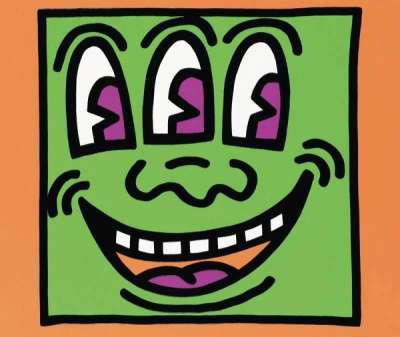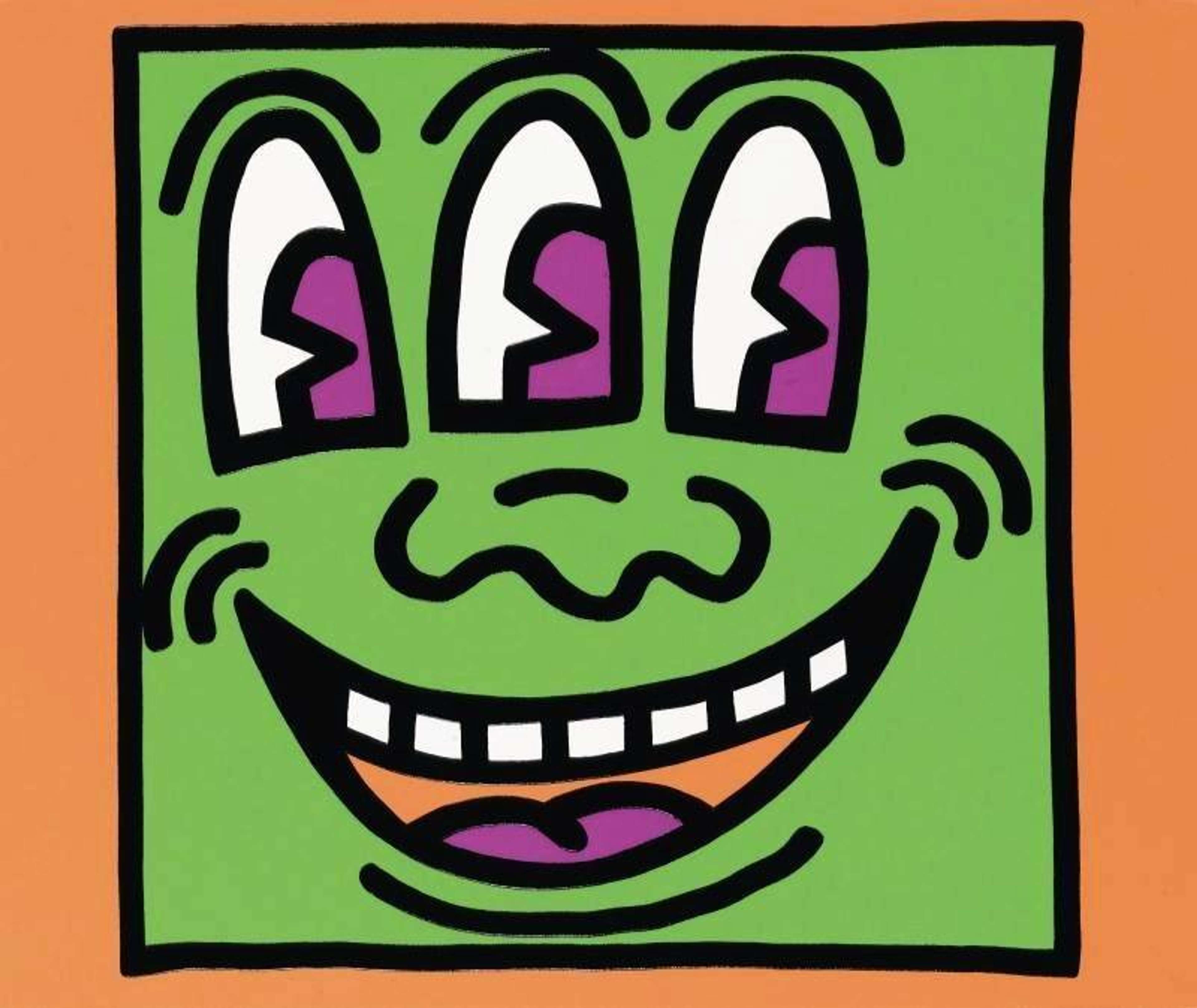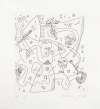Icons
In Keith Haring’s 1990 Icons suite, each print presents a single symbol from the artist’s lexicon. Employing commercial advertising’s flattened and saturated colours, Haring highlights his best-known icons—the radiant baby, angel, flying devil, three-eyed monster and barking dog—in unusual isolation, in acknowledgement of the fame these symbols had by attained.
Keith Haring Icons For sale
Icons Value (5 Years)
Works from the Icons series by Keith Haring have a strong market value presence, with 63 auction appearances. Top performing works have achieved standout auction results, with peak hammer prices of £98063. Over the past 12 months, average values across the series have ranged from £20000 to £98063. The series shows an average annual growth rate of 15.43%.
Icons Market value
Auction Results
| Artwork | Auction Date | Auction House | Return to Seller | Hammer Price | Buyer Paid |
|---|---|---|---|---|---|
 Icons (complete set) Keith Haring Signed Print | 5 Dec 2025 | Lempertz, Cologne | £51,000 | £60,000 | £80,000 |
 Radiant Baby Keith Haring Signed Print | 18 Sept 2025 | Tate Ward Auctions | £16,150 | £19,000 | £25,000 |
 Barking Dog Keith Haring Signed Print | 26 Sept 2024 | Freeman's | £11,900 | £14,000 | £19,000 |
 Angel Keith Haring Signed Print | 1 May 2024 | Bonhams New Bond Street | £5,100 | £6,000 | £7,500 |
 Flying Devil Keith Haring Signed Print | 4 Mar 2024 | Sotheby's Online | £6,800 | £8,000 | £10,000 |
 Three Eyed Monster Keith Haring Signed Print | 15 Mar 2023 | Sotheby's Online | £8,925 | £10,500 | £14,000 |
Sell Your Art
with Us
with Us
Join Our Network of Collectors. Buy, Sell and Track Demand
Meaning & Analysis
Featuring some of his most recognisable motifs, Haring’s Icons is a set of five prints, each a single symbol rendered in his vivid and linear style Depicted in flattened, saturated colours and contoured in thick, bold lines, the series presents five Haring icons; the radiant baby, angel, flying devil, three-eyed monster and barking dog.
Much like fellow graffiti artist Jean-Michel Basquiat, Haring reuses particular symbols, all present in the Icons series, to produce a memorable pictorial language. The symbols used in this series first appeared in Haring’s New York subway drawings from early on in his career, notably the radiant baby ‘tag’ that the artist used in place of his signature on public art projects. Uncompromising in its positive tone, Haring’s syntax of signs in this series creates a universal language to be seen and understood by the masses of New York, thus producing a true public art charged with meaning.
Using light-hearted imagery and the visual language of commercialism and mass-media, Haring critiques the proliferation of capitalism in 1980s New York. Haring used his art to oppose the negative effects of capitalism and mass consumerism, undoubtedly inspired by the Pop Art movement of the 1960s and his friend, Andy Warhol. The Icons series prints are rendered in flat, saturated colours as a nod to the rise of commercialism and mass production in Haring’s lifetime. Heavily influenced by Andy Warhol and the wider Pop Art movement of the 1960s, his work bridges the gap between high art and mass consumerism so as to dissolve boundaries between fine art, political activism and popular culture. As evidenced by his famous Pop Shop, Haring conflated high art with commercialism and so claimed to mirror the capitalist world that he lived in.
The Icons series is also notable for its reworking of traditional Christian iconography to critique organised religion and the government amidst the HIV/AIDS epidemic of 1980s New York. Rooted in his encounter with the Jesus Movement of the 1970s, prints like the Radiant Baby, Angel and Flying Devil, are demonstrative of the way the artist shapes religious source material to reflect contemporary concerns of his generation. Haring’s use of redemptive imagery overflows with paradoxical themes like life and death, good and evil, religion and sexuality, heaven and hell, to speak to the ambiguities and socio-political injustices of the time.

















